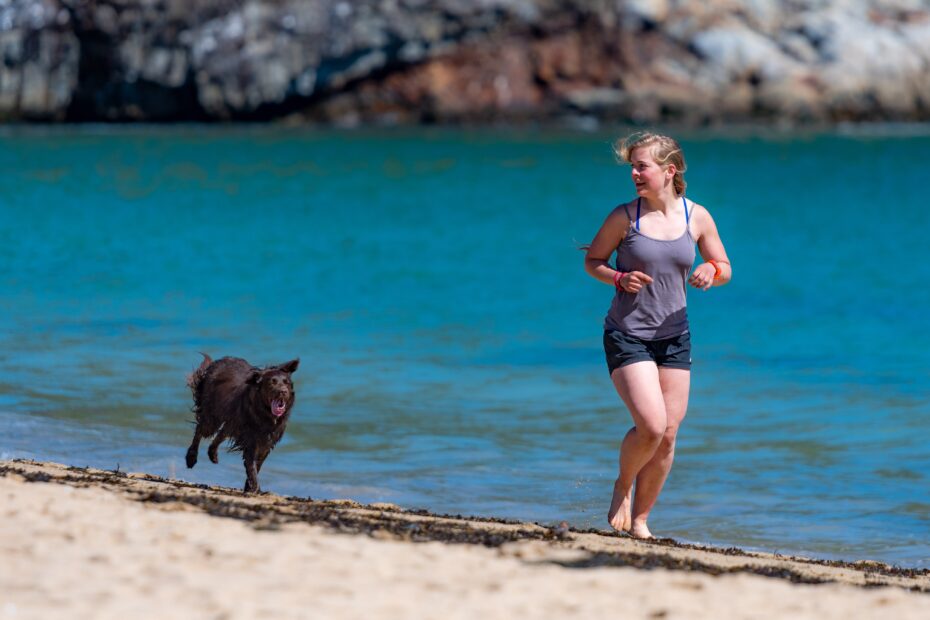 When you bring home your rescue dog, they will need some time to settle in and get to know you. Exercising with your new friend is a great way to bond with them. You can use it as part of their obedience training — your dog will start to learn that you are a team together, which also involves being able to learn some basic commands like “stop” and “wait.” Making sure that your rescue dog gets plenty of exercise is also important, especially if they have shown any signs of behavioral issues. Some of these begin because a dog hasn’t had enough mental and physical stimulation. Fortunately, you can help change this when you bring your rescue dog to their new forever home.
When you bring home your rescue dog, they will need some time to settle in and get to know you. Exercising with your new friend is a great way to bond with them. You can use it as part of their obedience training — your dog will start to learn that you are a team together, which also involves being able to learn some basic commands like “stop” and “wait.” Making sure that your rescue dog gets plenty of exercise is also important, especially if they have shown any signs of behavioral issues. Some of these begin because a dog hasn’t had enough mental and physical stimulation. Fortunately, you can help change this when you bring your rescue dog to their new forever home.
Jogging with your dog
If you have a high-energy rescue dog like a Labrador Retriever or a Cocker Spaniel, they should enjoy going for a jog with you if they are young and healthy. Some breeds, however, such as flat-faced dogs like Pugs and French Bulldogs are not suited to jogging. Neither are the miniature and toy breeds like Chihuahuas. Make sure that you get a suitable leash for jogging with your dog, such as a figure 8 leash, that will stop any lunging and pulling, or you can test out a good and sturdy harness. When you go out, do a little at a time, building up your stamina so that your dog can get used to running alongside you. Make sure that you start and finish your jog with a 10-minute loose-leash walk so that both you and your dog can warm up and cool down.
Swimming with your dog
Elderly dogs and rescues with joint and mobility issues still need to have exercise, which is why swimming is ideal. Contrary to popular belief, not all dogs can swim. In particular, dogs with short legs, short noses, and big heads may find swimming rather difficult. You may find that your rescue dog hasn’t spent much time in the water, so you may have to introduce them gradually, perhaps by visiting a local stream or by having a paddle in the lake or ocean. There are plenty of swimming pools that will accommodate both you and your dog — many have special sessions just so that dogs can enjoy the pool on their own (with lifeguards on hand).
Essential walkies
The value of taking your rescue dog on a walk at least twice a day goes without saying; however, it is important that you vary the route that you take and try plenty of new places. You can even try traveling short distances in the car and walking around a completely different location each time you venture out. This experience will help your rescue to grow in confidence as they meet new people, interact with other dogs, and enjoy new smells. Make sure that you consider your dog’s needs and breed; for instance, a Yorkshire Terrier only requires 30 minutes exercise a day, yet a Labrador Retriever will need at least 2 hours. Exercising with your new rescue dog will help you to bond. You can get out in nature together and boost your health and wellbeing.
Article by: Jane Anderson, a freelance writer, editor, and dog owner.
